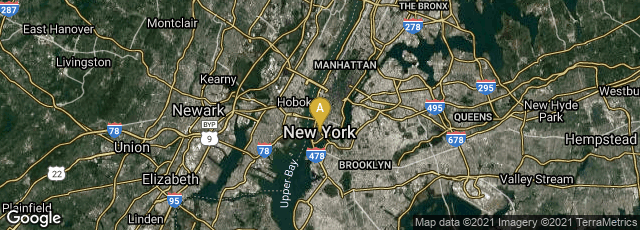

A: Manhattan, New York, New York, United States
In May 1880 printer and printing writer and historian Theodore Low De Vinne published "The Growth of Wood-Cut Printing II. The Modern Method by Machines" in Scribners Monthly, Volume 20, pp. 34-45. This historically oriented article traced the development of woodcut reproduction processes as they were adapted and greatly improved for printing machines versus the hand press. Readers are referred to the digital version of De Vinne's article to which I have linked. I will comment on a few selected statements that De Vinne makes.
Having lived through the rapid developments in printing machinery versus the hand-press, De Vinne, began with a summary of the revolutionary developments in printing that occurred at the beginning of the 19th century. De Vinne begins:
"The early decline of engraving on wood must be attributed to the imperfect methods and materials of hand-press printing. If the art did not come before its time, it did wait nearly four centuries for the cuts which have most plainly shown the beautiful and usefulness of the art— for the cuts that had to be printed on printing machines of iron, and on machine-made paper. It should be noted that the iron press and iron printing machine which gave this demonstration could not have been made at a much earlier period. The invention of the machine waited for the invention of the steam-engine, and of swiftly following mechanisms which shaped and planed the metal of which it was made as it never could have been done by hand labor. When made, the machine itself could not have been used to profit without steam."
There are a number of interesting details of this opening paragraph. First, De Vinne refers to "printing machines" which was primarily an English expression. In the U.S. at the time many of the "machines" were identified simply as "presses." However, the expression printing machine does make a clearer distinction between a hand press and a mechanized press. Also, De Vinne, of course, greatly simplified the history, since we know that some of the earliest printing machines were driven by hand-cranks. He is, of course, correct, that without advances in iron production and fabrication, required for building printing machines, and steam engines, and without small steam engines to power printing machines, the technology would not have succeeded.
De Vinne continues:
"There is no accessible wood-cut of the first printing machine made for the London 'Times,' but it must have been a marvel of complexity, for, although it printed by one operation only one side of the sheet, it had more than one hundred pinion-wheels."
Apparently, De Vinne did not have access to the printed editions of Koenig's patents that included Koenig's schematics of his presses; nor did he have access to a copy of the 1851 pamphlet issued by Koenig & Bauer reproducing the patent drawings.
De Vinne then correctly credits Charles Knight for recognizing that woodcuts could be printed by machinery. De Vinne references the Penny Magazine, apparently unaware that Knight and the printer William Clowes issued the first books printed on a printing machine that were illustrated with woodcuts in 1829, well before they began printing the Penny Magazine in 1832. As De Vinne points out, the images in the Penny Magazine were printed from stereotype plates as regular woodcuts could not survive 200,000 impressions or anywhere near that number; whether stereotypes were used for the illustrated books printed in 1829, which presumably had circulation in only a few thousand copies, is unknown. De Vinne points out that stereotype renditions of woodcuts limited the subtlety in the rendition of images.
De Vinne then explains the advantages of electrotyping and references the Harper's Illuminated and New Pictorial Bible, in which electrotyping was first used on a large scale. He also explains the limitations of the Adams Power Press, which was so extensively used for book work in America, even though it was a mechanized platen press. Platen press, he explained, limited the ability to ink and reproduce large images accurately. The Adams Power Press, he wrote, did not go out of favor in the U.S. until the 1860s when it was gradually replaced by cylinder presses, which could print on dry paper.